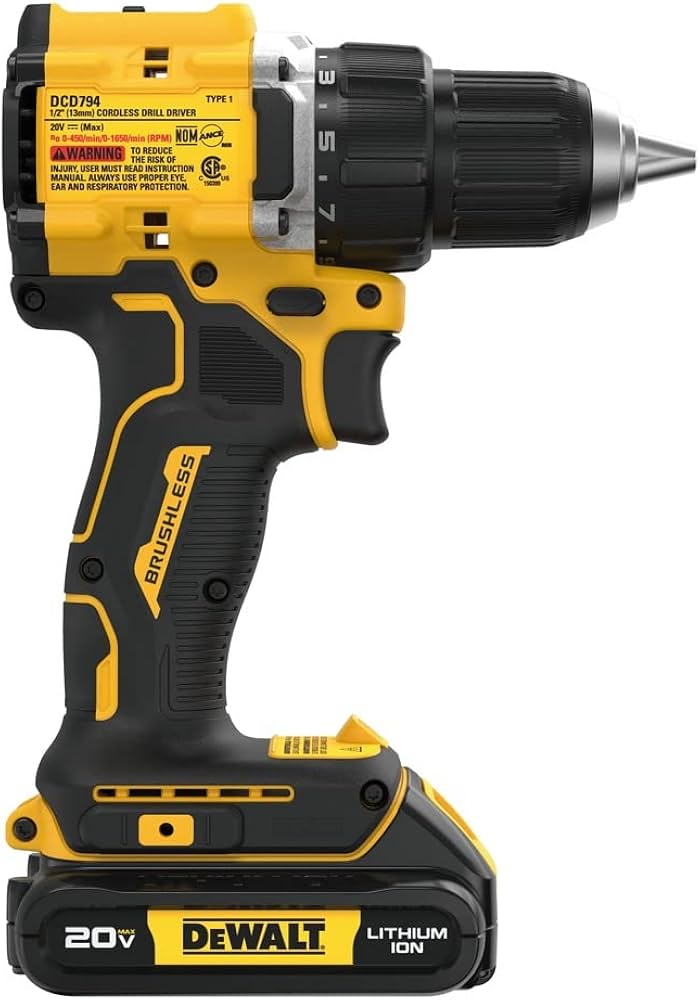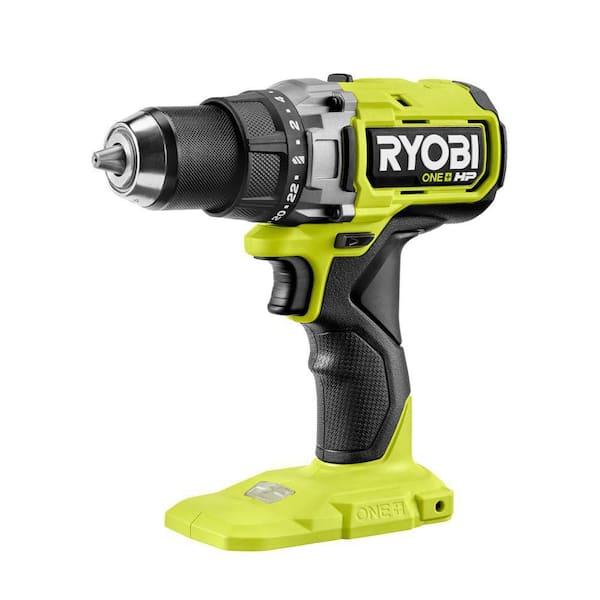
Whether you’re a DIY enthusiast working on home projects or a tradesperson tackling demanding jobs, selecting the right cordless drill can make all the difference. In this article, we’ll explore what to look for, key features and considerations, and how to pick a model that fits your needs. We’ll also highlight some of the top models on the market so you can make an informed decision.
1. Why a Cordless Drill Matters
A cordless drill gives you freedom of movement—no cords to manage, no need for nearby outlets, and fewer limitations. It allows you to drill holes and drive screws virtually anywhere: in a workshop, on a construction site, in your home or garage. According to buying guides, mobility, weight and power are crucial for cordless drills.
For many users, a high-quality cordless drill is one of the most versatile tools in the toolbox. From assembling furniture, hanging shelves, drilling pilot holes, to heavier tasks like through-wood or metal drilling, the right drill makes jobs quicker, safer and less tiring.
2. Key Features to Consider
Choosing the right cordless drill means understanding its specifications and how they relate to what you’ll actually do. Below are the most important features.
2.1 Voltage & Battery (Capacity)
- The voltage (V) of the battery is a rough measure of the potential power of the drill. For example:
- A 12 V drill may be fine for light-duty tasks (furniture, small repairs).
- 18 V or 20 V drills are more versatile and handle most DIY/home tasks.
- The amp-hour (Ah) rating indicates how long the battery can run (runtime). Higher Ah = longer usage time, but also typically heavier.
- For serious jobs, prioritize both higher voltage and good Ah rating (keeping weight manageable).
2.2 Motor Type: Brushed vs Brushless
- Brushless motors are more efficient, run cooler, have longer life, and often more power for their size.
- Many top-end cordless drills now use brushless motors.
- If you expect heavy or continuous use (professionally or extensively around the home), a brushless model is better value long term.
2.3 Chuck Size & Type
- The chuck is the part that holds the drill bit. Common sizes: ⅜-inch (≈10 mm) and ½-inch (≈13 mm).
- A ½-inch chuck usually gives more flexibility for larger bits and heavier work.
- Keyless chucks let you swap bits quickly by hand — which is very practical.
2.4 Torque & Speed
- Torque is the rotational force the drill can apply — important for driving screws, bolts and drilling into tough materials.
- A drill often has multiple speed settings (e.g., low speed/high torque for driving, higher speed for drilling).
- Some guides emphasise that insufficient torque is a common mistake when buying a drill.
2.5 Ergonomics, Weight, and Runtime
- A drill that’s too heavy or bulky will fatigue your arm fast — especially if you’re working overhead or for extended periods.
- Battery packs add significant weight — it’s a trade-off between power/runtime and comfort.
- Runtime: having 2 batteries can be beneficial so one is charging while the other is used.
2.6 Extra Features & Compatibility
- LED lights on the drill help when working in dim spaces.
- Compatibility of batteries across tool systems: many brands let you share batteries across multiple tools, saving cost.
- Case, extra bits, belt clip, variable speed trigger, and clutch settings are useful add-ons.
3. What Tasks Will You Use It For?
Before choosing a specific drill, reflect on what you’ll use it for. This will guide which features matter most.
3.1 Light Household / DIY
- Tasks: hanging photos, assembling furniture, occasional drilling into soft wood or drywall.
- Good to have: ~12 V or 18 V, modest Ah, light weight, comfortable grip.
- You likely don’t need the highest torque or biggest battery.
3.2 Regular DIY / Home Maintenance
- Tasks: drilling into wood, metal occasionally; driving many screws; maybe installing shelving or cabinetry.
- Good to have: 18–20 V, good torque, brushless motor preferred, ½-inch chuck, comfortable handle/weight.
- Consider extra battery for longer sessions.
3.3 Professional or Heavy-Duty Use
- Tasks: drilling into hardwoods, masonry, metal; long sessions; job sites; frequently driving large fasteners.
- Features to look for: Highest voltage (18/20V, maybe more), high Ah battery, brushless motor, robust build, ½-inch chuck, high torque, strong brand support.
- Price will be higher, but you get durability and performance. Review tests show highest performing drills cost more but deliver substantially better results.
4. Mistakes to Avoid
- Buying too weak a drill and finding it struggles when you need to drive big screws or drill into harder material.
- Focusing only on battery voltage without considering runtime (Ah) and overall system.
- Ignoring ergonomics and weight — a drill you hate holding will end up unused.
- Not checking battery compatibility if you already own tools from a brand or plan to build a system.
- Overlooking brand and service support — good brands often provide better parts, service and durability. One Reddit tip: “Stick to a major brand such as DeWalt or Milwaukee. All the cordless … need to be same brand to interchange batteries.”
5. Top Cordless Drill Models Worth Considering
Here are some high-performing cordless drills that consistently rank well in reviews. (Note: check local availability and pricing.)

Milwaukee M18 Fuel ½” Drill/Driver 2903‑20
Price not available
•
Go to merchant

DeWalt 20V MAX Brushless ½” Drill/Driver DCD794B
Price not available
•
Go to merchant

Makita 18V LXT Brushless ½” Driver‑Drill XFD14Z
Price not available
•
Go to merchant

Bosch 18V Compact Brushless ½” Drill/Driver GSR18V‑400B12
Price not available
•
Go to merchant

Ryobi One+ HP 18V Brushless ½” Drill/Driver PBLDD02K1
Price not available
•
Go to merchant
Craftsman V20 ½” Drill/Driver CMCD700C1
Price not available
•
Go to merchant
DeWalt Xtreme 12V 5‑in‑1 Drill/Driver DCD703F1
Price not available
•
Go to merchant
Bosch 12V Flexiclick 5‑in‑1 Drill/Driver GSR12V‑300FCB22
Price not available
•
Go to merchant
Highlights of each:
- Milwaukee M18 Fuel ½” Drill/Driver 2903‑20: Widely considered a top performer for power and durability; ideal for heavy-duty use.
- DeWalt 20V MAX Brushless ½” Drill/Driver DCD794B: Excellent value in the premium category — brushless, strong brand, good battery ecosystem.
- Makita 18V LXT Brushless ½” Driver‑Drill XFD14Z: Another strong premium option; good balance of power and ergonomics.
- Bosch 18V Compact Brushless ½” Drill/Driver GSR18V‑400B12: Slightly more compact while retaining strong performance — good for tighter spaces.
- Ryobi One+ HP 18V Brushless ½” Drill/Driver PBLDD02K1: Mid-range option, good for homeowners; part of a large tool ecosystem.
- Craftsman V20 ½” Drill/Driver CMCD700C1: A budget-friendly model that still provides decent performance for general home use.
- DeWalt Xtreme 12V 5‑in‑1 Drill/Driver DCD703F1: Good entry-level choice for small tasks, lighter duty.
- Bosch 12V Flexiclick 5‑in‑1 Drill/Driver GSR12V‑300FCB22: Compact multi-function model for lighter jobs and tight spaces.
6. Choosing for Bangladesh & Local Considerations
Since you’re in Bangladesh (Maijdi, Chittagong), here are a few additional local-specific considerations:
- Check battery compatibility and availability locally. Importing batteries or chargers can be costly.
- Voltage: Ensure the drill’s charger is suitable for local power supply (typically 220–240 V).
- After-sales/support: Choose brands with local service centres or reliable import/agent access.
- Spare batteries: If you’ll use it heavily, a second battery may be worth purchasing to avoid downtime.
- Accessories: Locally available drill bits, cases and attachments matter for real‐world usage and cost.
- Price vs value: Import duties, shipping and availability may make some models more expensive than in other markets—budget accordingly and consider warranty/support trade-offs.
7. Summary & Final Recommendations
- Define your primary use: occasional small tasks, regular DIY, or pro/heavy-duty.
- Prioritise: voltage & Ah (power + runtime), motor type (brushless preferred), ergonomics/weight, chuck size, and battery/brand ecosystem.
- If you’ll be using the drill frequently, investing in a premium model (brushless, 18–20 V, good battery) will pay off with efficiency, durability and fewer frustrations.
- For occasional home use, you can save money—but don’t choose one so under-powered that you’ll regret it later.
- Always check battery compatibility, local support and real-world usage (weight, feel in hand) before purchase.
- Use the feature list above to evaluate claims from manufacturers and pick a model suited to your tasks rather than marketing hype.
